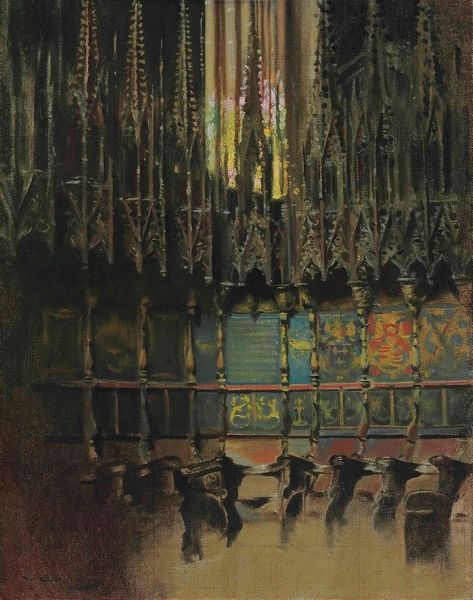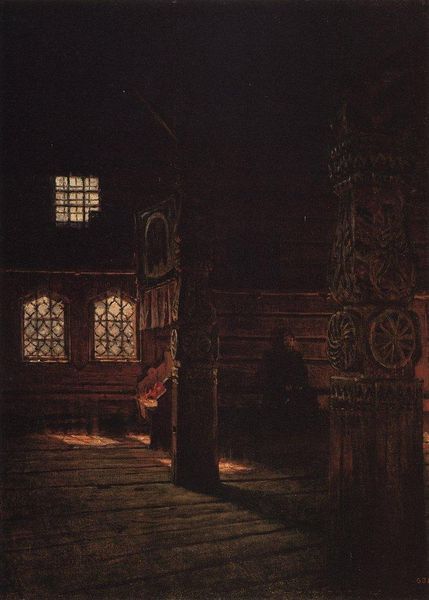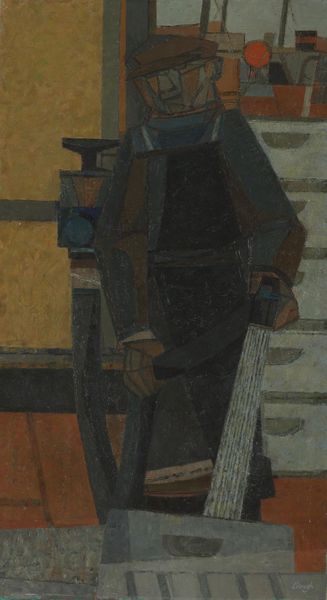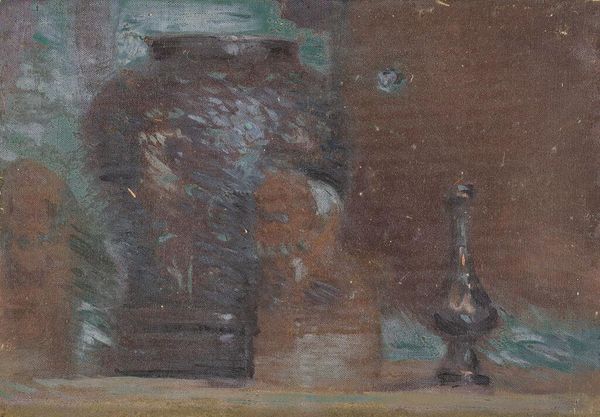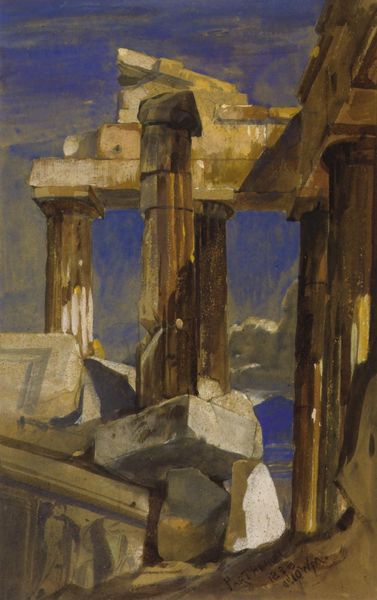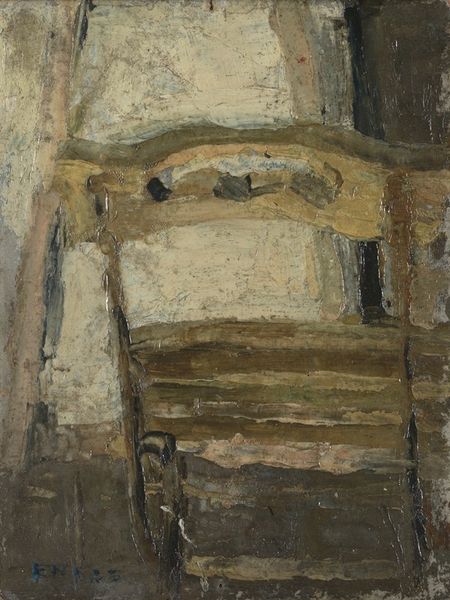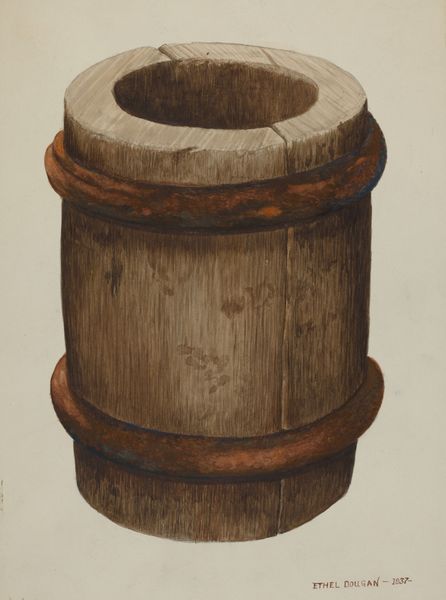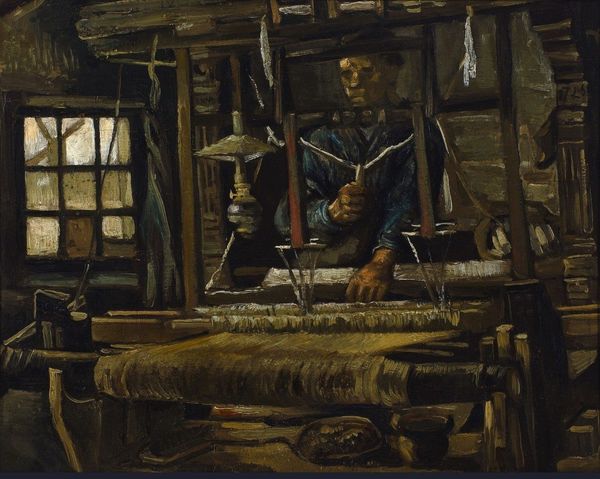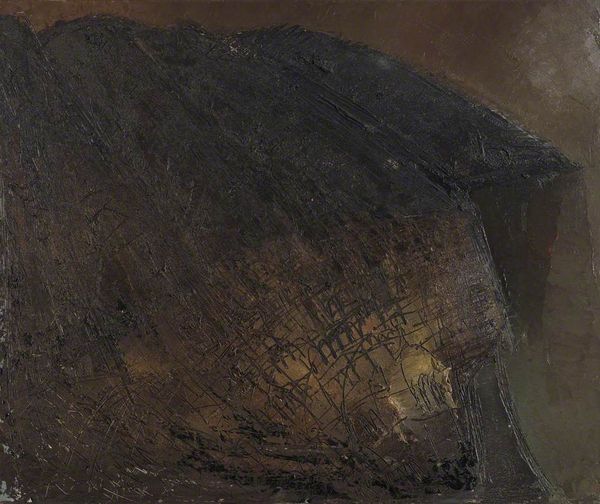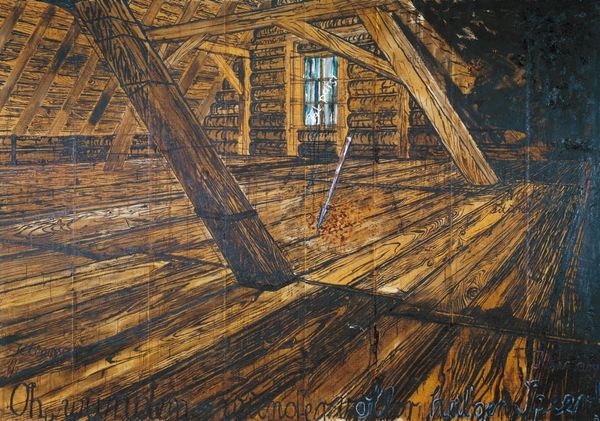
Carved pillar in the refectory of the Petropavlovsk church in the village Puchugi in Vologda province 1894
0:00
0:00
carving
#
abstract painting
#
carving
#
sculpture
#
possibly oil pastel
#
oil painting
#
acrylic on canvas
#
earthy tone
#
underpainting
#
painterly
#
painting painterly
#
watercolor
Copyright: Public domain
Curator: Oh, the air of hushed reverence in this one! This is Vasily Vereshchagin’s “Carved pillar in the refectory of the Petropavlovsk church in the village Puchugi in Vologda province," painted in 1894. It's quite literally a pillar of faith, isn't it? Editor: My first impression is quietude, definitely. And a strange kind of weight—both physical, from the depicted column, but also the weight of tradition, of history bearing down. It's quite somber, isn't it? Curator: Indeed. You sense the atmosphere that lingers within those ancient walls. It makes one wonder about the role of such spaces, especially through the artist's gaze. How does a place become sacred? And what purpose do these crafted embellishments truly serve within it? Editor: Well, art within religious spaces often negotiates power. These grand columns were status symbols, reflecting the affluence and authority of the church. The pillar’s carving is really elaborate. And note that the painting itself immortalizes not the sacred object but an element of it—a section—drawing more attention to it as a piece of craft. Curator: Craft, yes, but more than mere construction, surely. Vereshchagin was likely captivated by the symbolic language embedded within the woodwork. Look closer at the patterns—repeating motifs, like visual mantras almost. Doesn’t the carving suggest to you the layers of devotion built up through the years? A sort of "prayer made solid"? Editor: Prayer made solid, I like that. Still, one can't dismiss the function of such ornamentation in creating a distinct cultural identity, right? For centuries, iconographic visuals have helped unify believers—think about the illuminated texts in Medieval times or frescoes during the Renaissance. What story do you reckon the pillar whispers? Curator: Oh, countless stories, I imagine! Stories of births and blessings, of repentance and redemption. Think of all the sermons that echoed around it, the confessions heard in its shadow... Vereshchagin invites us into that quiet conversation. The way he handles light too suggests almost the glow of unseen souls. Editor: True. Though beyond its spirituality, doesn’t it subtly hint at the socio-economic contexts of rural Russia back then? Even a humble refectory pillar embodies historical conditions and reveals who held the power in villages. It represents more than prayer; it evokes people's life, conditions, and their devotion—to some degree enforced—as subjects to church authority. Curator: Mmm, "devotion under duress," perhaps, eh? You always bring it back down to earth! I still think, though, Vereshchagin’s intention leans towards a more mystical connection with faith. Editor: Maybe. It’s such art's charm. We read our different lenses in. It offers more insights each time.
Comments
No comments
Be the first to comment and join the conversation on the ultimate creative platform.
